Last Men (Flowers) Standing
I’m not sure what to do with myself this time of year. It was 45 degrees when I woke up this morning, a temperature demanding jeans and sweatshirt, but it’s supposed to warm up to mid-70’s today with bright sunshine, a weather situation that demands shorts, golf shirt, and a trip to the driving range. I had the hot tub cover fixed last week and finally got around to changing the water and cleaning the tub yesterday. To sit outside in the tub, enjoying the steam and the bubbles, and stare up at the looming 100-foot-tall oak with its leaves just beginning to turn yellow/orange, is calming, if not sedating. This morning, I especially enjoyed the dogwoods, which have already turned a purplish/reddish color. I know it’s getting late in the season when I get out of the tub and am reluctant to wrap myself in a towel that is too cold from hanging on the edge of the deck rail. I know, this is definitely a first-world problem.
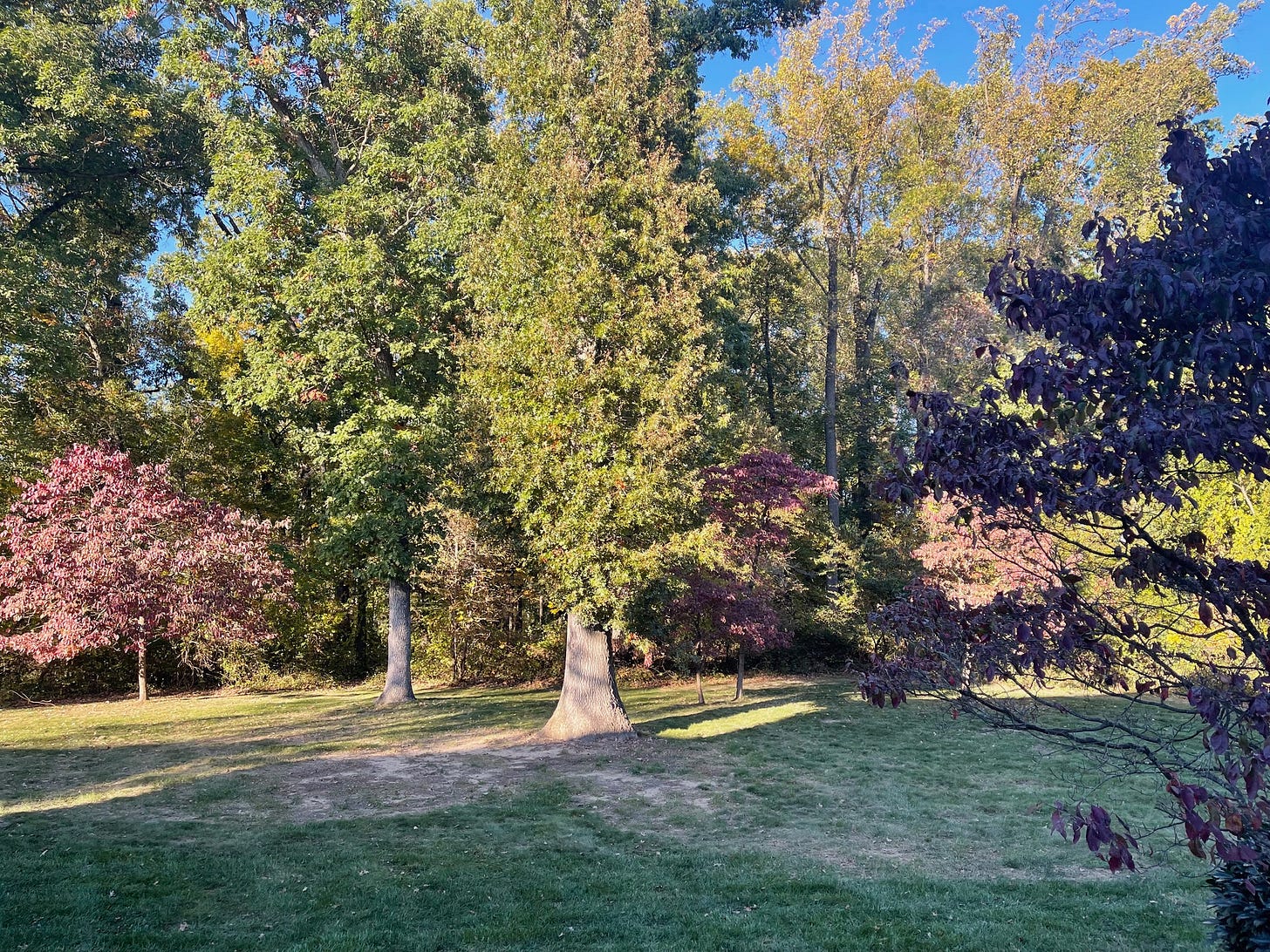
As far as the garden, it is going about the business of preparing for winter. On the list for today is to crack open Tracy DeSabato-Aust’s book, “The Well-Tended Perennial Garden”, and double-check her many suggestions about garden maintenance in the fall. She has a great series of charts where she lists most of the perennials by season, with general comments about what to do as the weather gets cold. Then you can look up individual plants to see her comments for each one. Even though I’m itching for something to do, in most cases her advice, and the advice of many writers and bloggers, seems to be to do nothing in the fall and wait for spring. This advice does not sit well with this particular Type A Gardener, who prefers to have some garden chores on his daily to-do list.
As I was wandering the garden after my hot tub session this morning, I found myself marveling at the very few plants that are still flowering this time of year. There are only four in my garden with any flowers at all (there would have been five if the squirrels hadn’t eaten the blooms off my hardy begonia) and I thought I would celebrate them this morning.
I think I’ll start by acknowledging the outstanding late season contribution from my windflowers, or Japanese anemones. It’s a funny kind of plant where the stems and flowers explode upward from the basal growth at the bottom of the plant, to reach heights that don’t seem possible. The name, windflower, is apt because the flowers sway back and forth with the slightest breeze. You might remember that I originally purchased four of these plants, and Sun Nurseries generously gave me a 50% refund on two of them, the runts of the litter. Now, three seasons later, all four plants are flowering nicely. The smallest two, planted nearest the astilbe in the middle of the bed, are now nearly indistinguishable from the others. I’m reminded that these plants thrive in partial or speckled shade, so maybe I’ll divide two of them next year and move them to other shady parts of the garden.
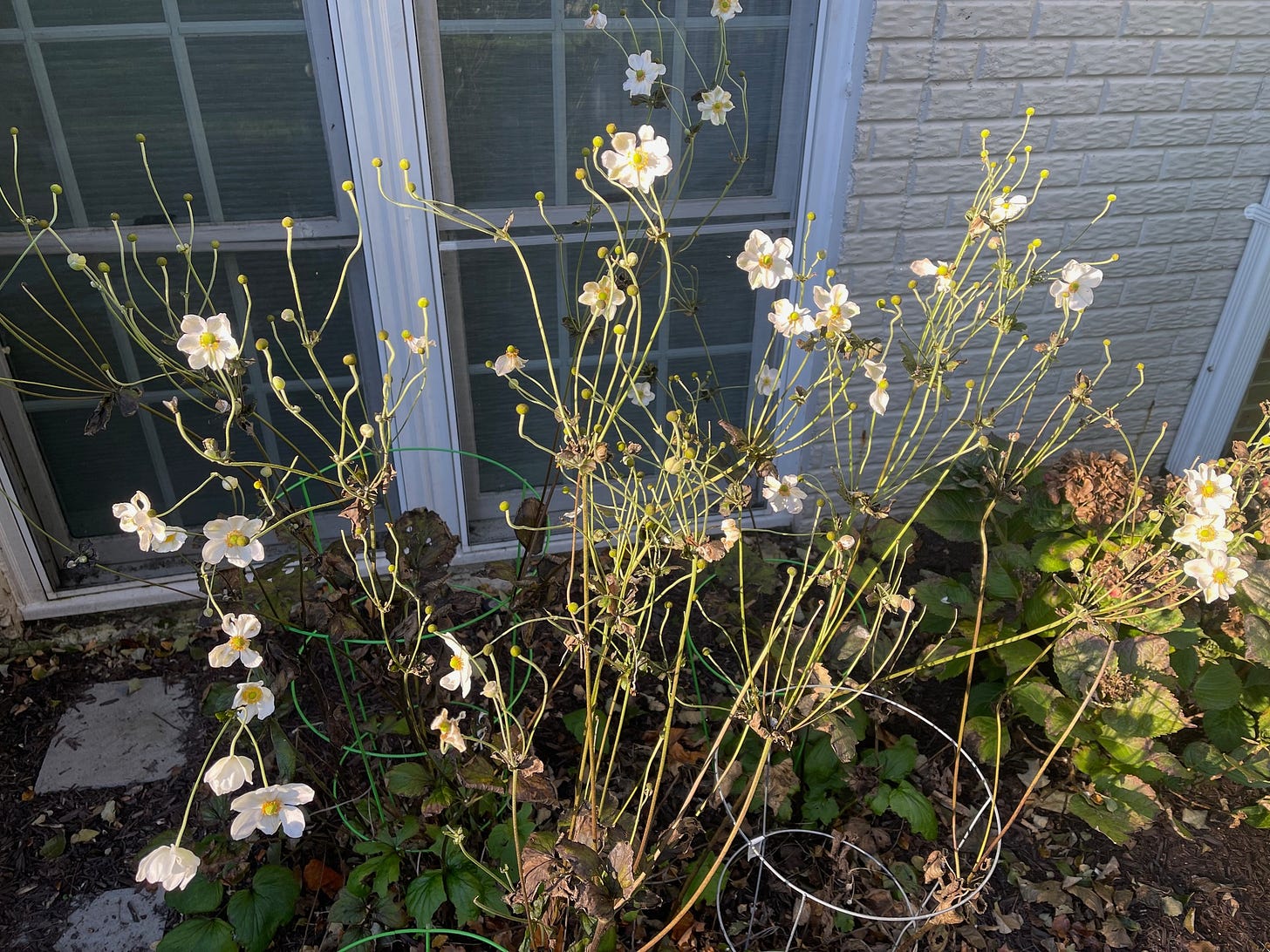
Next up for recognition are my toad lilies, or tricyrtis. Research tells me the name comes from the Greek -- tri-, meaning three, and kyrtos, meaning humped -- a pretty good description of the three petals that form the base of the flowers on each stem. I’ve been surprised at how small the flowers are, which don’t add as much color to the fall garden as I might like. On close inspection, the flowers are different, and beautiful, and they seem to be hardy enough to thrive in my shady garden. In fact, any flowering plant is welcome in a shade garden, and this one offers the benefit of being a fall bloomer, adding some color and interest late in the season when you want it most. These photos are of the toad lily at the top of the steps bed near the fence. It’s an interesting spot that gets dappled shade in the morning and close to full sun in the afternoon. On the list for next spring is to add some additional plants around the crape myrtle to finish up the design of the bed.
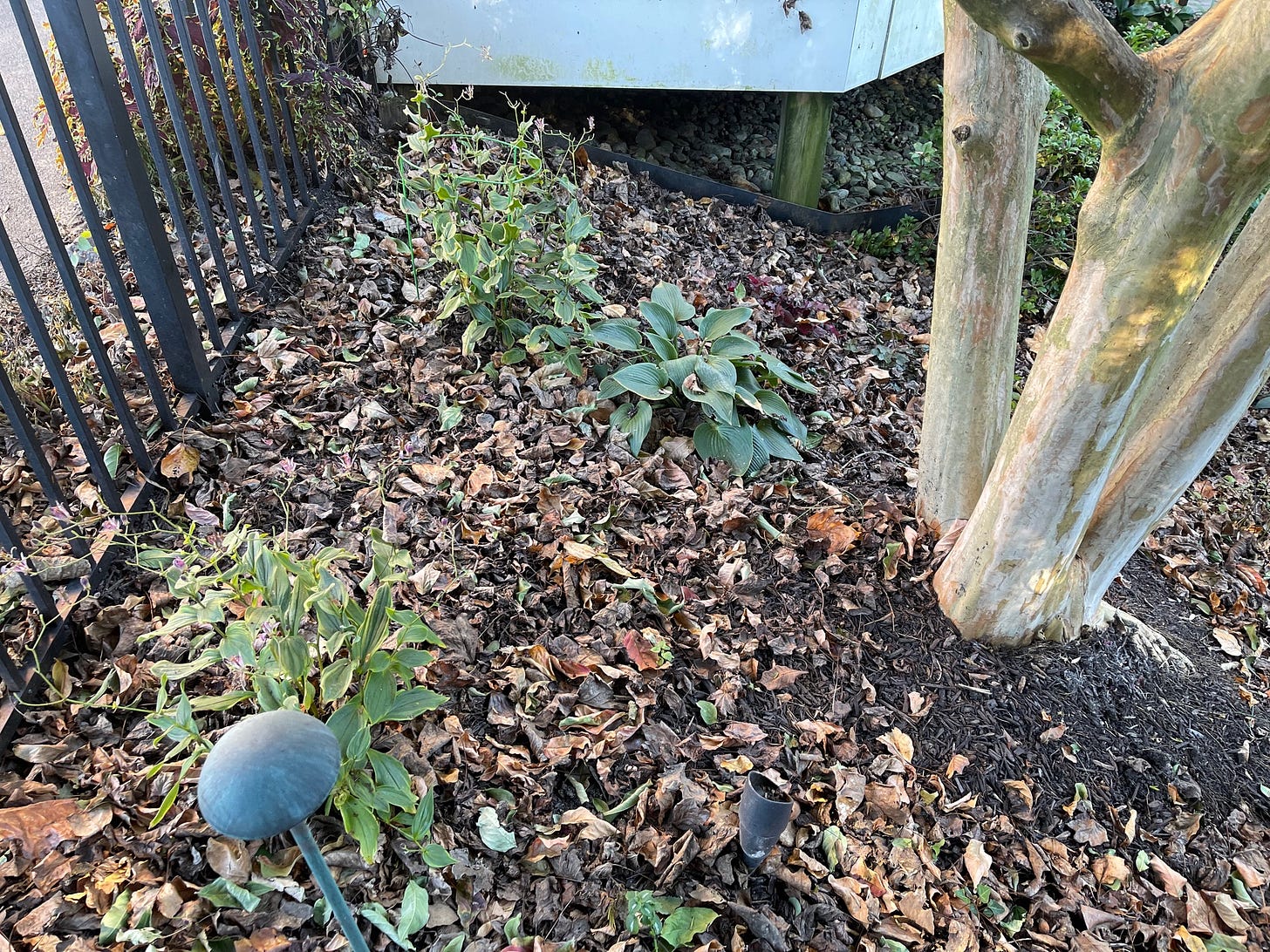
The last two plants clinging to their flowers are a lonely yarrow flower in the sun bed, and a few blue flowers from the patch of blue plumbago that hangs out near the sun bed at the base of the wall surrounding the waterfall.
The yarrow is an experiment that may or may not work out. I always liked the unique look of yarrow flowers, which have a flat, saucer-like appearance and come in wonderful colors in a variety of cultivars. I thought they were a “must have” for the sun bed, but that was before I learned of their propensity to spread. To repeat an old adage shared with me by my editor, Molly Glassman, who happens to be a master gardener as well as a great editor, perennials sleep their first year, creep their second year, and leap the third year. I wholeheartedly agree. My yarrow plants have done a good job sleeping and creeping their first two seasons, and I’m hoping they will leap next spring.
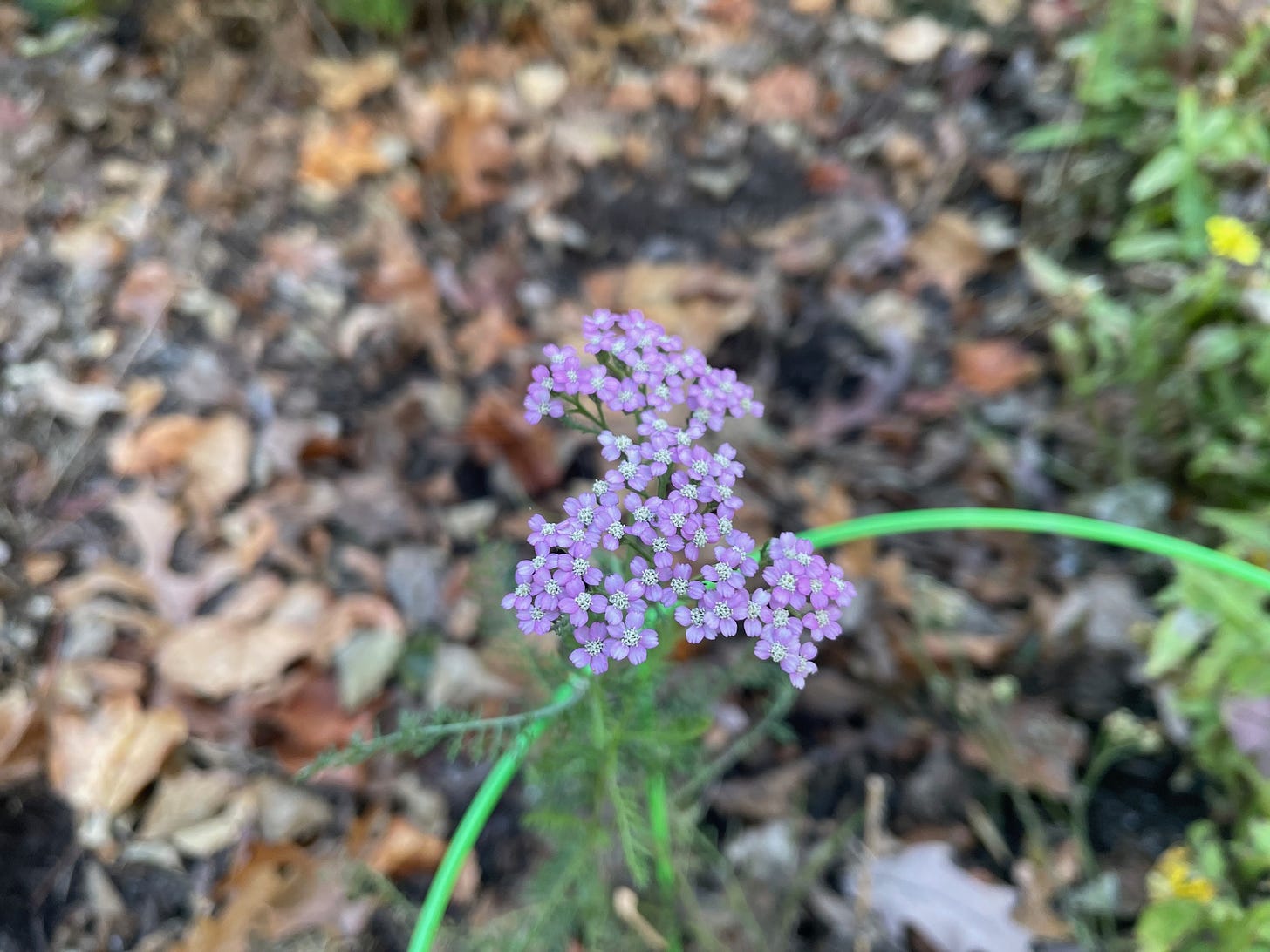
The last flower standing that deserves recognition is the patch of blue plumbago at the end of the waterfall bed. I fell in love with this groundcover and planted a dozen plants in the back bed. It was my first shot at designing a bed on my own, without the help of Sasha, my landscape designer from Sun Nurseries, and I’ve been thrilled with the color and texture they’ve added. The back bed plumbago seem to be done for the season, but these plants are determined to keep flowering.
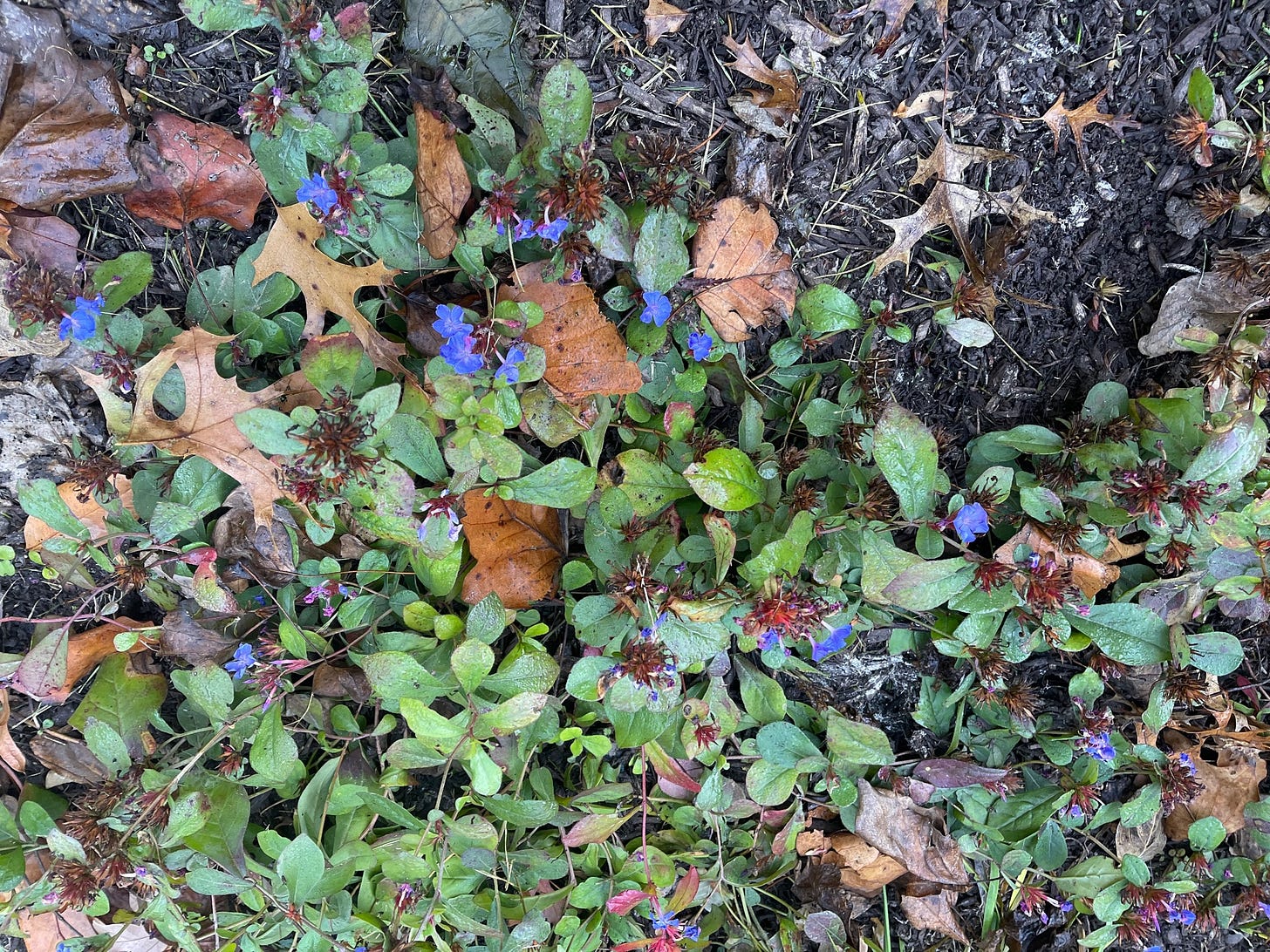
And that, folks, is the recap of the only flowers left blooming in the garden. I’m not sure what kind of garden work “The Well-Tended Perennial Garden” book has in store for me, but my days of just walking around enjoying the colors of the flowers are about over this year.
Thanks for reading. If you care to share this newsletter you can click on the SHARE button in the text or send a link to kensolow.substack.com. If you want to reread a post, feel free to do so by accessing the archives. Just click on the small image of me at the top of the newsletter. Thank you so much for your comments and likes. They are much appreciated.





